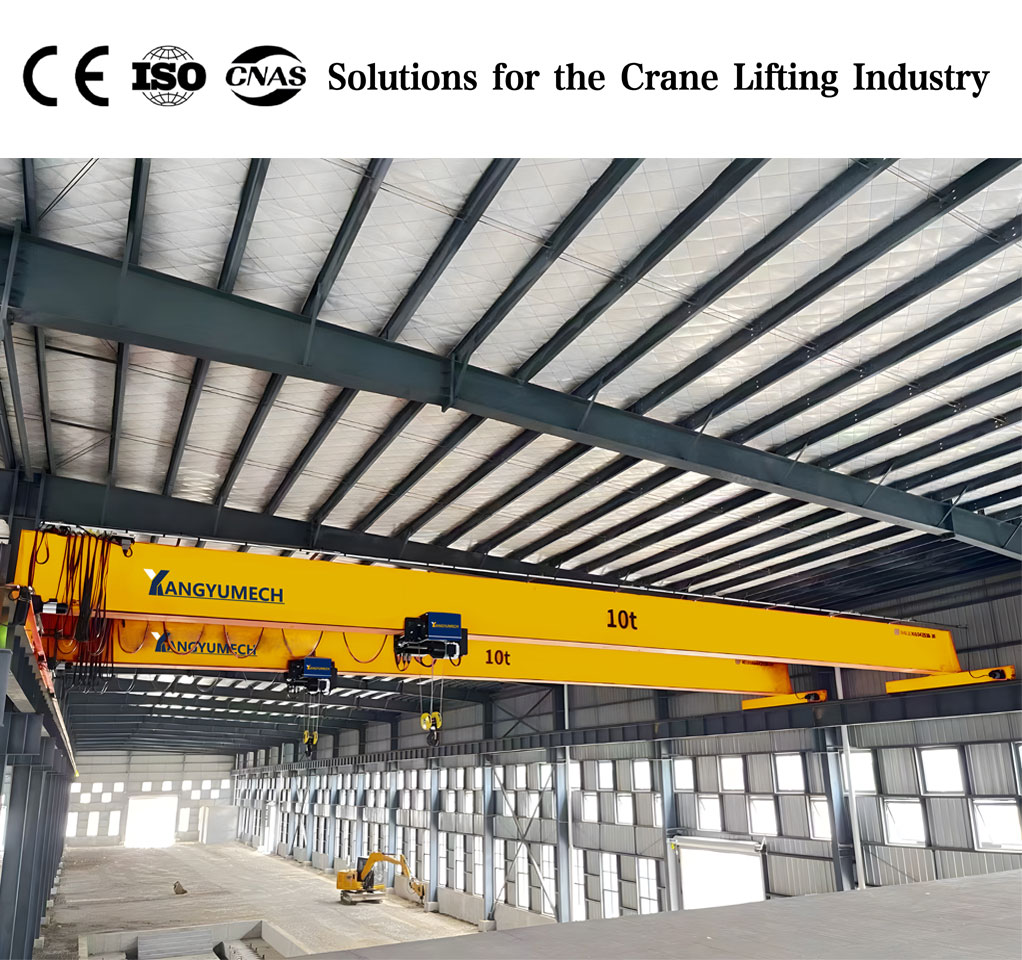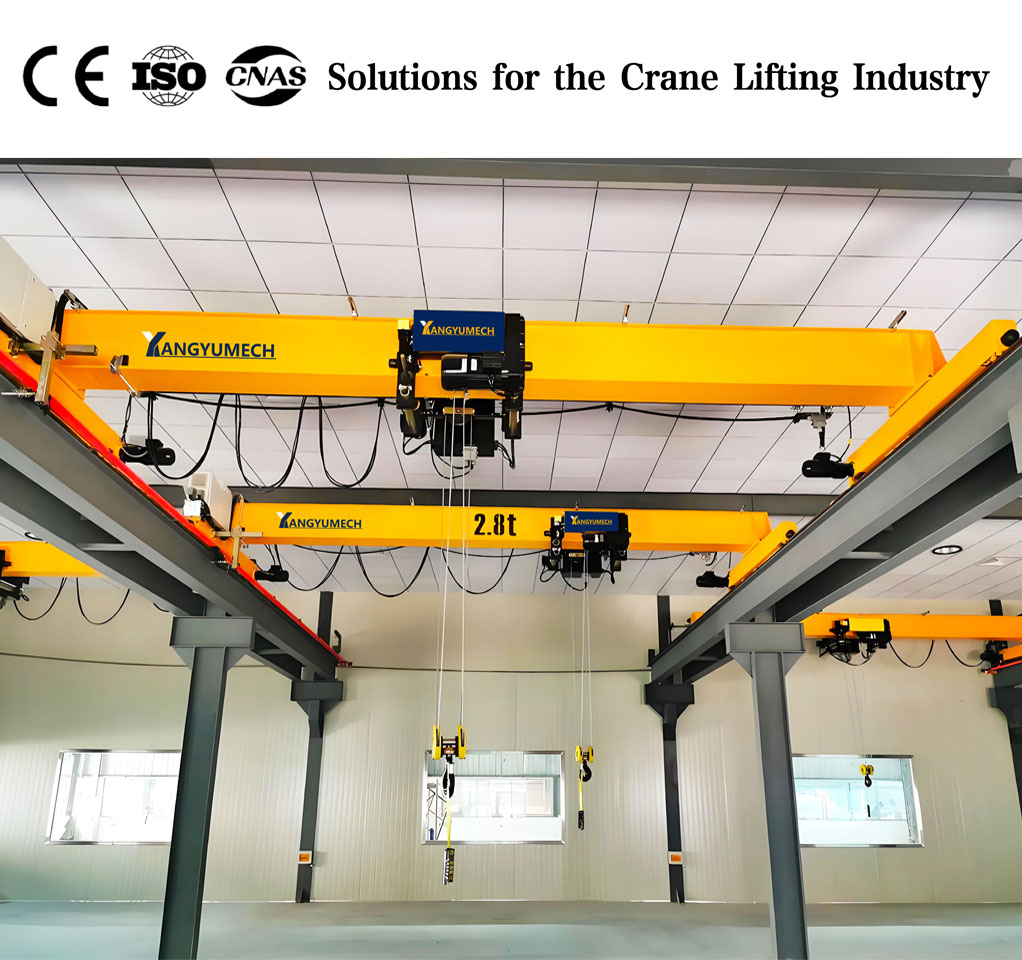Single girder overhead cranes dominate factory floors, warehouses, and workshops worldwide as the go-to solution for streamlined lifting operations. Combining affordability, space efficiency, and robust performance, these cranes handle loads up to 20 tons across spans reaching 35 meters. This comprehensive guide explores their design, applications, advantages over double girder models, and key selection criteria to optimize your operations.

A single girder overhead crane features one primary bridge beam (girder) supported by two end trucks that travel on elevated runway rails. An electric hoist and trolley move laterally along the girder’s bottom flange, enabling three-dimensional movement (lifting, cross-travel, and long-travel). Ideal for light-to-medium duty cycles (Class C/D), these cranes excel where floor space is limited and budget constraints exist.

| Parameter | Range | Notes |
|---|---|---|
| Lifting Capacity | 1 – 20 tons | Up to 32.5 tons with special design |
| Span | 3 – 35 meters | Optimal: 5–25m |
| Lifting Height | 3 – 30 meters | Customizable |
| Work Duty | Class A (Infrequent) to Class D (Moderate) | Avoid continuous heavy use |
| Hoist Types | Electric Chain / Wire Rope | Wire rope for >5 tons; chain for precision |
Lower Costs
30-40% savings vs. double girder cranes
Reduced steel usage (single beam = lighter structure)
Cheaper installation (lighter runway rails)
Space Optimization
Reduced headroom: Needs 15-20% less vertical clearance
Compact design: Ideal for low-clearance facilities (<6m height)
Faster Installation & Flexibility
Modular assembly in 1-3 days
Easily relocated or extended with runway systems
Energy Efficiency
Smaller motors (5-15 kW) consume 25% less power than double girder equivalents
Manufacturing: Machining centers, assembly line part feeding
Warehousing: Loading/unloading trucks, stacking pallets
Automotive: Engine/transmission handling, press line servicing
Small Workshops: Maintenance bays, repair shops
Packaging Plants: Moving raw materials, finished goods
*Real-World Case: A German auto parts supplier reduced part transfer time by 45% using two 10-ton single girder cranes (18m span) above assembly cells, saving €120,000/year in forklift costs.*
| Factor | Single Girder Crane | Double Girder Crane |
|---|---|---|
| Cost | €8,000 – €50,000 | €25,000 – €150,000+ |
| Headroom Requirement | Low (Hoist under beam) | High (Hoist between beams) |
| Capacity | Up to 20 tons (standard) | 5 – 500+ tons |
| Duty Cycle | Light/Moderate (Class A-D) | Heavy/Continuous (Class E-F) |
| Span Limits | ≤35m (optimal ≤25m) | Up to 120m+ |
| Maintenance Access | Easier (open underside) | Restricted (between girders) |
Choose Single Girder When:
✔ Budget is constrained
✔ Headroom is limited (<9m)
✔ Lifting ≤20 tons
✔ Operations aren’t continuous (≤50% duty cycle)
Girder Construction
European Standard EN 13001: Box-type girders (welded steel) for spans <25m
I-Beams (DIN 1025): Cost-effective for capacities <5 tons
Hoist & Trolley Configurations
Under-Running Hoists: Standard for most applications
Top-Running Hoists: For higher hook heights (requires reinforced girder)
Safety Systems
Overload limiters (110% SWL cut-off)
Emergency stop buttons + limit switches
Anti-collision sensors for multi-crane bays
CE Marking (EN 15011 compliance)
When requesting quotes, specify:
Capacity & Span: e.g., 5 tons @ 15m span
Lifting Height: Hook path to floor
Power Supply: 400V/50Hz/3-phase (EU standard)
Control: Pendant / Radio remote / Cabin
Duty Classification: FEM/ISO Class (e.g., 2m)
Environmental Needs: Foundry duty? Corrosion protection?
Cost Calculator (EU Market):
Base Crane (5-ton, 15m span): €12,000–€18,000 + Variable Frequency Drive (VFD): +€2,500 + Radio Remote: +€1,200 + Stainless Steel Hoist (IP55): +€3,800 + Installation: €3,000–€6,000
Total Project Estimate: €21,500–€31,500
Automation Readiness:
Pre-wire for auto-positioning or remote diagnostics
Choose trolleys compatible with encoder feedback
Modular Expansion:
Design runways for future bay extensions
Select hoists with 25% reserve capacity
Smart Features:
IoT-enabled hoists for predictive maintenance
Collision Avoidance Systems (CAS)
Single girder overhead cranes deliver unmatched value for light-to-medium material handling. By optimizing floor space, minimizing costs, and offering adaptable performance, they remain the #1 choice for SMEs and large facilities with moderate lifting needs. When precision, budget, and vertical clearance matter, this crane type outperforms alternatives.
Ready to optimize your workflow? Get a Custom Quote from leading Yangyu manufacturers meeting EN 13001 safety standards.